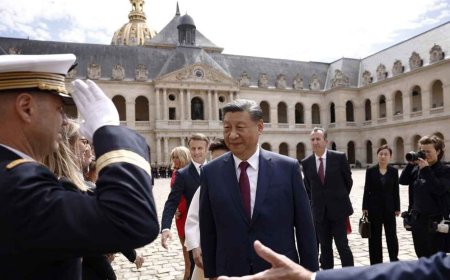Dollar a touch higher, currency reaction muted as Trumps deals 30% tariff threat to EU and Mexico
The U.S. dollar rose slightly after Donald Trump proposed 30% tariffs on EU and Mexico if re-elected. Market reaction remains muted as investors gauge the trade policy impact.

Introduction: Dollar Inches Up Amid Trade Warning
The U.S. dollar saw a modest uptick on Monday as global financial markets assessed former President Donald Trump’s recent threat to impose 30% tariffs on imports from the European Union and Mexico if re-elected in November. While the news stirred concerns about a potential revival of protectionist trade policies, the currency market reaction remained largely contained, signaling that traders are taking a wait-and-watch approach for now.
The dollar index (DXY), which tracks the greenback against a basket of six major currencies, edged up by 0.2% to 105.15 in early Monday trade, recovering slightly from last week’s mild dip.
Trump’s Trade Rhetoric: Déjà Vu?
In a weekend campaign rally and subsequent interviews, Donald Trump reignited his protectionist rhetoric by proposing a blanket 10% tariff on all imports and suggesting targeted 30% tariffs on goods from the EU and Mexico, calling it necessary to correct "decades of trade imbalance" and protect American jobs.
“The dollar has gained modestly in a classic risk-off move. While Trump’s statement has echoes of his 2018-2019 trade wars, markets have become more conditioned to this rhetoric,” said Adam Cole, Chief Currency Strategist at RBC Capital Markets.
Traders remember the market turmoil sparked during Trump’s first presidency, when his aggressive tariff strategy, particularly against China, led to volatility in both equities and currencies.
Muted Currency Market Reaction
Despite the gravity of Trump’s remarks, the currency market has not reacted with significant swings, signaling either skepticism about the feasibility of such tariffs or a belief that they remain hypothetical at this stage.
-
EUR/USD slipped slightly to 1.0810, down 0.1%.
-
USD/MXN ticked higher by 0.3% to 18.12.
-
GBP/USD hovered around 1.2855, with little reaction.
“There’s a sense that traders are still pricing in the base-case scenario of a Biden re-election. Until polling shifts dramatically or Trump’s trade talk is backed by real legislative momentum, the markets are unlikely to overreact,” said Jane Foley, Head of FX Strategy at Rabobank.
EU and Mexican Responses Awaited
Both the European Union and Mexico have yet to formally respond, though EU officials have hinted at reciprocal measures if punitive tariffs are enacted. Analysts note that such a trade standoff could once again drag global growth prospects, especially at a time when both regions are attempting to emerge from economic slowdown.
“If these tariffs are implemented, they could impact over $1 trillion in transatlantic and North American trade, rekindling fears of a global supply chain disruption,” said Alberto Ramos, Chief Latin America Economist at Goldman Sachs.
Mexico remains one of the U.S.'s largest trading partners, especially under the current USMCA agreement, which replaced NAFTA. A 30% tariff could seriously impact automobile, electronics, and agriculture sectors.
Dollar Strength: More Than Just Trade Talk
While Trump’s announcement created short-term buzz, the dollar's modest rise is also supported by stronger-than-expected U.S. economic data, rising Treasury yields, and the Federal Reserve’s cautious stance on rate cuts.
Recent labor market data and inflation prints have kept the Fed on the sidelines, supporting dollar demand.
“Traders are still focused on the Fed’s trajectory. As long as the Fed remains hawkish or neutral, the dollar will stay supported,” noted Marc Chandler, Managing Director at Bannockburn Global Forex.
Investor Outlook: Calm Before the Storm?
Investors remain cautious but not panicked. While Trump’s statement has injected fresh uncertainty into global trade policy, markets are betting that actual policy implementation, if it happens, is months away.
Some analysts view the muted FX reaction as a sign of market maturity.
“This isn’t 2016 anymore. Markets have learned to filter political noise from actionable economic policy,” said Francesca Fornasari, Portfolio Manager at Insight Investment.
That said, should Trump’s polling improve and his trade policy gain traction, currency markets—especially those of export-dependent economies—could begin to price in more volatility.
The dollar’s slight appreciation and the restrained reaction in the FX markets reflect cautious optimism that Trump’s tariff threat remains speculative for now. However, with the U.S. presidential race heating up and global trade still fragile post-pandemic, any tangible move toward protectionist policy could trigger a sharper response in the coming months.
What's Your Reaction?
 Like
0
Like
0
 Dislike
0
Dislike
0
 Love
0
Love
0
 Funny
0
Funny
0
 Angry
0
Angry
0
 Sad
0
Sad
0
 Wow
0
Wow
0













































































